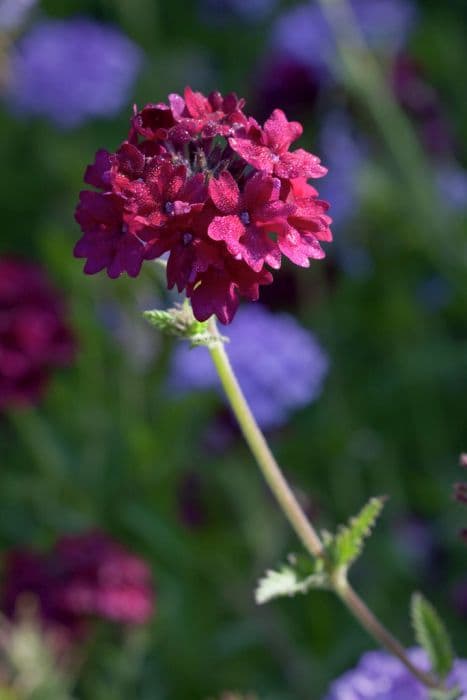Blue Vervain Verbena hastata

ABOUT
Verbena hastata, commonly known as blue vervain, has a distinctive appearance that is characterized by its slender, upright growth habit. This perennial plant features square stems that are sometimes hairy and bear lance-shaped leaves. The leaves are deeply veined, toothed and arranged oppositely along the stem. One of the most striking features of blue vervain is its inflorescence, which consists of numerous small, tubular flowers. These blossoms are typically a deep blue to purple color, although they can sometimes be pink or rose. The flowers are clustered tightly along erect, terminal spikes that gracefully extend above the foliage. Blue vervain's blooms are particularly loved by butterflies and other pollinators, adding a lively dynamic to the plant's presence in a garden setting. The roots and lower stems may become woody over time, contributing to the plant's hardiness and ability to self-seed and proliferate in appropriate growing conditions. Its seed heads are also noteworthy, providing visual interest even after the flowering season concludes.
About this plant
 Names
NamesFamily
Verbenaceae
Synonyms
Blue Vervain, Swamp Verbena, Simpler's Joy, Wild Hyssop, American Vervain
Common names
Verbena hastata var. hastata, Verbena paniculata, Verbena stricta, Verbena virginica.
 Toxicity
ToxicityTo humans
Blue vervain (Verbena hastata) is not typically considered a toxic plant to humans when used properly. However, as with any plant, individual sensitivities, allergies, or reactions can occur. If large amounts are ingested, it might cause gastrointestinal discomfort or other issues such as diarrhea or vomiting. It is always important to use plants with medicinal properties responsibly and with proper knowledge or medical advice, particularly because excessive or inappropriate use can lead to adverse effects.
To pets
Blue vervain (Verbena hastata) is not widely recognized as a toxic plant to pets. However, as with any non-food plant ingested by pets, there could be some risk of gastrointestinal upset, such as vomiting or diarrhea. It's always wise to prevent pets from consuming plants not specifically intended for their consumption, as individual animals might have sensitivities or reactions that are not commonly reported.
 Characteristics
CharacteristicsLife cycle
Perennials
Foliage type
Deciduous
Color of leaves
Green
Flower color
Purple
Height
2-6 feet (0.6-1.8 meters)
Spread
2-3 feet (0.6-0.9 meters)
Plant type
Herb
Hardiness zones
3-7
Native area
North America
Benefits
 General Benefits
General Benefits- Attracts pollinators: Verbena hastata is known for attracting bees, butterflies and other beneficial insects, aiding in pollination.
- Low maintenance: The plant requires minimal care once established, making it ideal for gardeners seeking low-maintenance options.
- Drought-resistant: Adapted to survive in dry conditions, it reduces the need for frequent watering.
- Erosion control: The extensive root system of Verbena hastata helps stabilize soil and prevent erosion.
- Ornamental value: The plant's tall spikes of purple flowers add aesthetic beauty to gardens and landscapes.
- Habitat for wildlife: It provides shelter and food for various wildlife, promoting biodiversity.
- Adaptable to varied soils: Verbena hastata can thrive in a range of soil types, from moist to well-drained.
 Medical Properties
Medical Properties- Anti-inflammatory: Verbena hastata has been historically used for its potential to reduce inflammation.
- Analgesic: There may be mild pain-relieving properties associated with its use.
- Antipyretic: The plant has been used traditionally to reduce fever.
- Sedative: It is sometimes used for its calming effects on the nervous system.
- Expectorant: Verbena hastata has been used to help clear respiratory tracts by loosening phlegm.
 Air-purifying Qualities
Air-purifying QualitiesThis plant is not specifically known for air purifying qualities.
 Other Uses
Other Uses- Dye Production: The blue vervain can be used to produce a natural dye, suitable for coloring fabrics and textiles.
- Insect Repellent: Crushing the leaves and applying them to the skin can help deter some insects, making it a natural alternative to chemical repellents.
- Fish Bait: Some anglers use the slimy seeds as a fish bait, particularly for catching catfish.
- Garden Ornamental: Blue vervain is often planted to enhance the beauty of gardens with its tall flower spikes and appealing purple coloration.
- Wildlife Habitat: The plant provides habitat and food for various pollinators, including bees and butterflies, contributing to biodiversity.
- Erosion Control: The root system of blue vervain can help stabilize soil and prevent erosion on riverbanks and slopes.
- Floral Arrangements: The perennial's attractive purple flowers are commonly used to add visual interest to both fresh and dried floral arrangements.
- Religious and Spiritual Use: Some native cultures may use blue vervain in their spiritual and religious ceremonies, symbolizing peace and tranquility.
- Education and Research: Blue vervain is used in educational settings to study plant biology and ecology due to its wide distribution and ecological significance.
- Livestock Forage: While not a primary choice for forage, it can be consumed by livestock if other preferred fodder options are scarce.
Interesting Facts
 Feng Shui
Feng ShuiThe Blue Vervain is not used in Feng Shui practice.
 Zodiac Sign Compitability
Zodiac Sign CompitabilityThe Blue Vervain is not used in astrology practice.
 Plant Symbolism
Plant Symbolism- Healing: Verbena hastata, commonly known as Blue Vervain, is often associated with healing due to its historical use in traditional medicine to treat various ailments.
- Purification: The plant symbolizes purification and is thought to cleanse and protect both physical and spiritual spaces when used in rituals and ceremonies.
- Peace: Blue Vervain represents peace and is believed to bring tranquility and calmness to those who use it or keep it nearby.
- Harmony: The plant is also a symbol of harmony, promoting balance and unity in relationships and environments.
- Divine Inspiration: In some cultures, Blue Vervain is connected to the divine and is seen as a conduit for inspirational and spiritual enlightenment.
- Enchantment: Due to its enchanting appearance and use in folk magic, the plant is thought to possess mystical properties, symbolizing enchantment and allure.
 Water
WaterBlue Vervain should be watered deeply but infrequently, allowing the soil to dry slightly between waterings. During its active growing season in spring and summer, water the plant approximately once a week with about 1 to 1.5 gallons per plant, depending on the soil type and climate. Reduce the frequency of watering as the plant goes dormant in the fall and winter, and ensure proper drainage as Blue Vervain does not tolerate overly wet soil for extended periods.
 Light
LightBlue Vervain thrives in full sun to partial shade, with a preference for receiving at least six hours of direct sunlight daily. The ideal spot for Blue Vervain would be an area where the plant is exposed to morning sunlight and has some protection from the intense heat of late afternoon sun, especially in very hot climate areas.
 Temperature
TemperatureBlue Vervain prefers temperatures between 60°F and 75°F but can survive in temperatures as low as 0°F and as high as 90°F. The plant is cold-hardy and can tolerate frost, though growth and blooming are optimal within the preferred temperature range. Avoid exposing Blue Vervain to prolonged temperatures below freezing.
 Pruning
PruningBlue Vervain should be pruned to remove spent flower spikes and encourage more blooms, as well as to maintain its shape and promote a bushy growth habit. Pruning is best done in late winter or early spring before new growth begins. Deadhead regularly during the blooming season to prolong flowering.
 Cleaning
CleaningAs needed
 Soil
SoilBlue Vervain (Verbena hastata) thrives in a loamy soil mix with good drainage and prefers a moist environment. The ideal pH range for Blue Vervain is between 6.0 and 7.5. You can create a suitable soil mix by blending equal parts of loam, sand, and peat to ensure good moisture retention and drainage.
 Repotting
RepottingBlue Vervain typically does not need frequent repotting as it's often grown as an annual. If grown as a perennial, it can be repotted every 2-3 years to refresh the soil and prevent root-bound conditions.
 Humidity & Misting
Humidity & MistingBlue Vervain grows best in moderate to high humidity environments but is quite adaptable and can tolerate a range of humidity conditions.
 Suitable locations
Suitable locationsIndoor
Provide sunlight, moist soil, and good air circulation.
Outdoor
Choose sunny spot, moist soil, protect from strong winds.
Hardiness zone
3-8 USDA
 Life cycle
Life cycleThe common name for Verbena hastata is Blue Vervain. Blue Vervain initiates its life cycle as a seed, which after winter dormancy, typically germinates in spring when temperatures warm. Upon germination, the seedling emerges, developing into a rosette of basal leaves, and then sends up erect, tall stems as it matures. Throughout the summer, the plant produces spikes of vibrant blue to purple flowers that are pollinated by insects, particularly butterflies and bees. After pollination, the flowers develop into small, dry nutlets that function as fruits, each containing seeds for the next generation. As a perennial, Blue Vervain will die back to the ground level in autumn, with the roots surviving winter to regenerate the following spring.
 Propogation
PropogationPropogation time
Spring to summer
The most popular method of propagation for Verbena hastata, commonly known as Blue Vervain, is through seed. The best time to sow the seeds is in late fall to early spring, as cold stratification helps break the seed’s dormancy. To propagate Blue Vervain by seed, you should scatter the seeds directly on the soil surface or just below it, since they require light to germinate. If starting indoors, the seeds should be sown in flats with seed-starting mix, lightly pressed into the soil and kept moist. It usually takes about two to four weeks for the seeds to germinate at 70 degrees Fahrenheit (approximately 21 degrees Celsius). Once the seedlings are large enough to handle, they can be transplanted to individual pots and later moved to their final position in the garden.
![Vervain [Donalena Lavender Grace]](/_next/image?url=https%3A%2F%2Fplants-admin.emdemapps.com%2Fimages%2Fplants%2F%2Fimages%2F604b575c837e7.png&w=640&q=75)
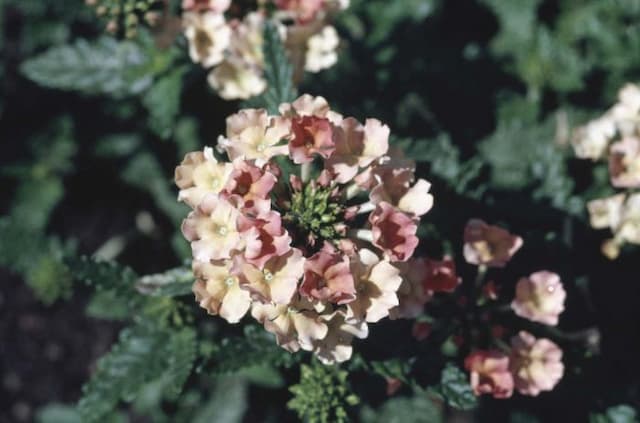

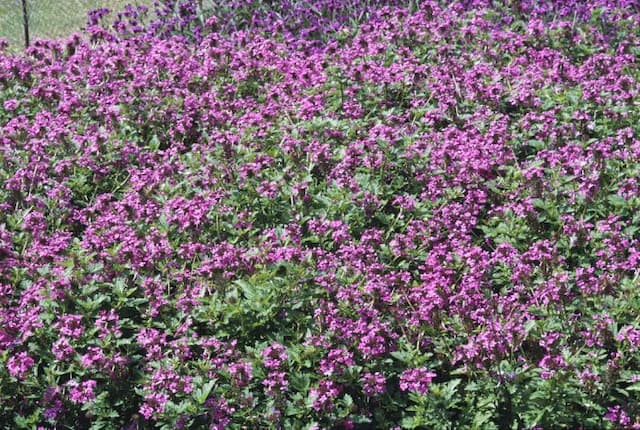
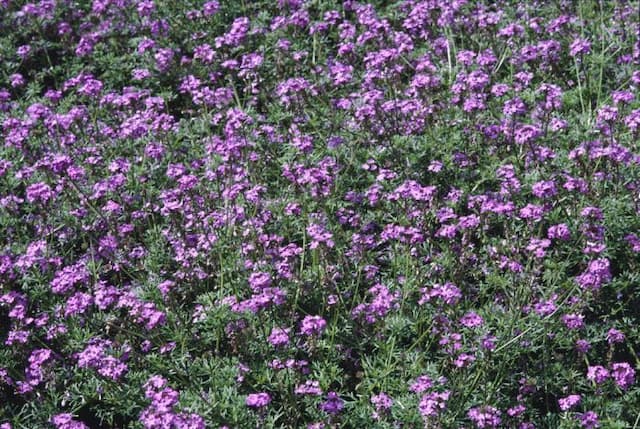
![Vervain [Endurascape Pink Bicolor]](/_next/image?url=https%3A%2F%2Fplants-admin.emdemapps.com%2Fimages%2Fplants%2F%2Fimages%2F604b594e749b0.png&w=640&q=75)
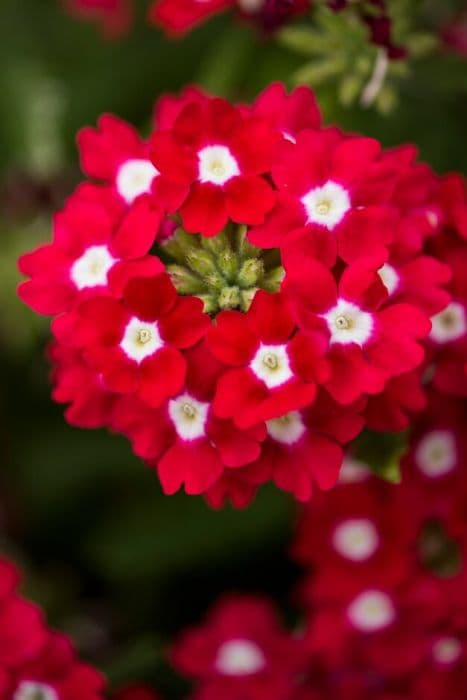
![Vervain [Seabrook's Lavender]](/_next/image?url=https%3A%2F%2Fplants-admin.emdemapps.com%2Fimages%2Fplants%2F%2Fimages%2F604b650ea9729.png&w=640&q=75)

